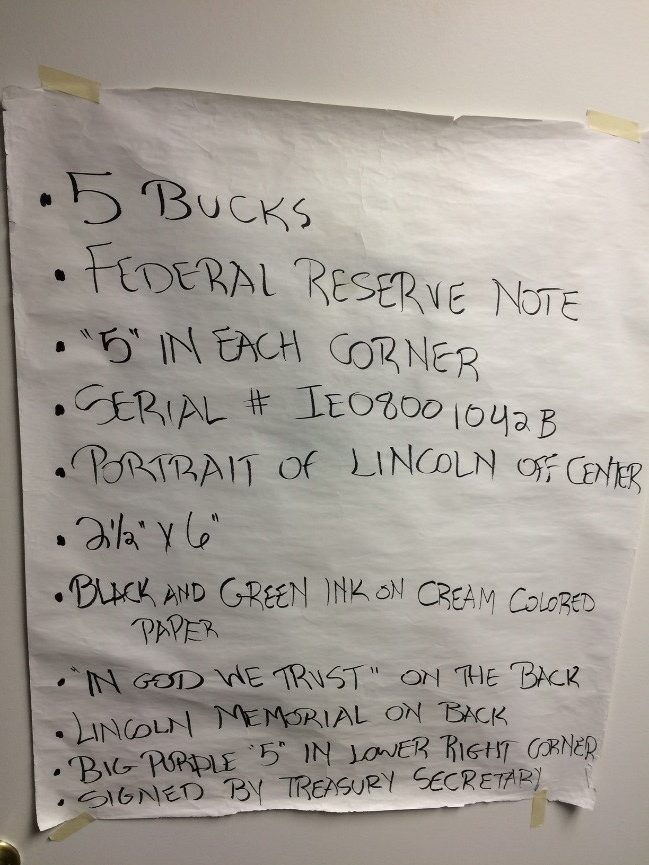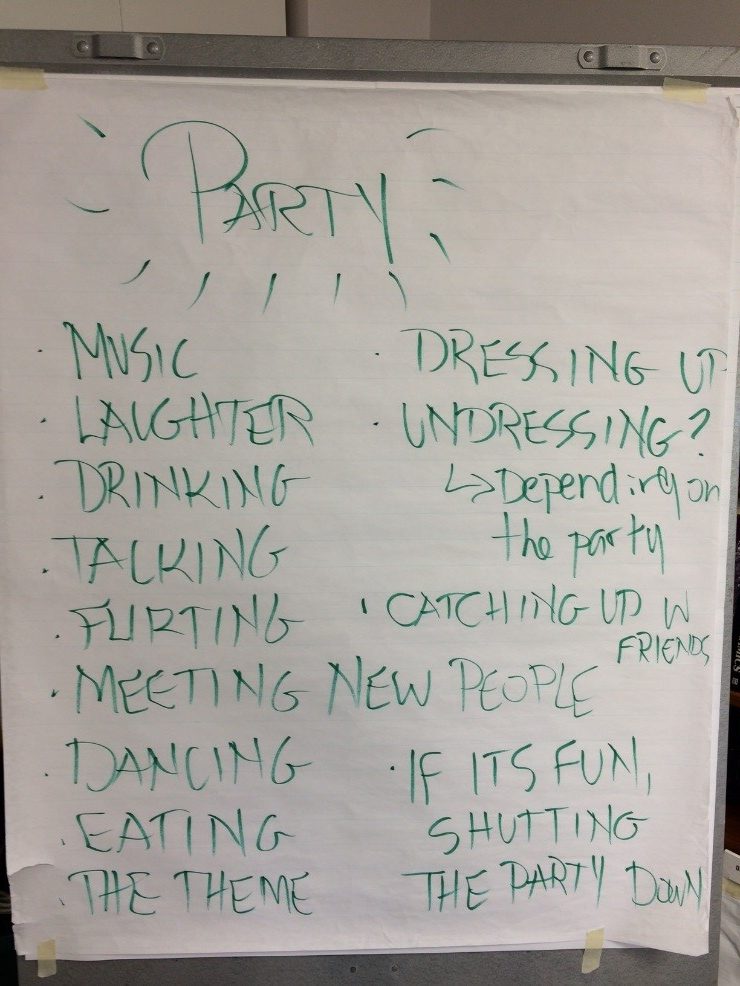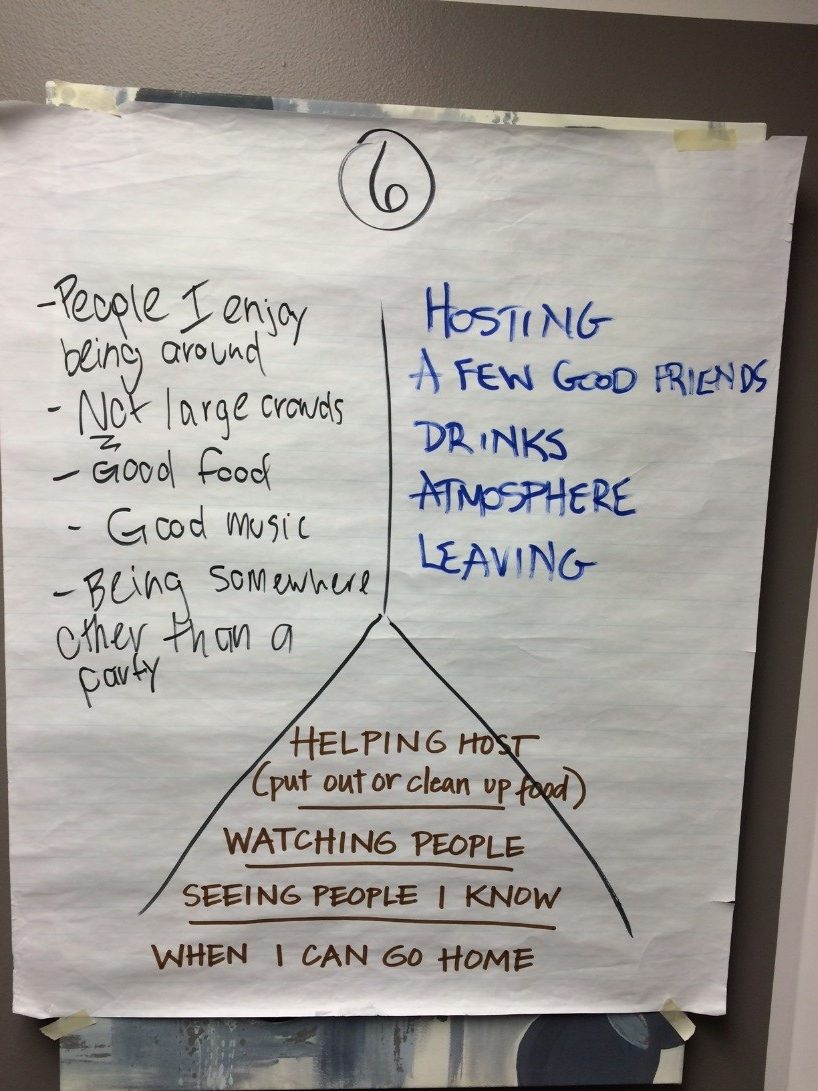Making Type Experiential
Type skeptics abound. There are many in the world who don’t understand or who struggle with the content of Type theory or the MBTI specifically. For these people, I find the best course of action to be interactive training designs and the use of experiential data from activities embedded within these designs. Such exercises let clients see, hear and experience the power of Type and what it has to offer. In the face of these exercises, any opposition tends to melt into curiosity and even enthusiasm. Anyone using the Myers-Briggs Type Indicator assessment–and certainly anyone interested in being an MBTI Master Practitioner should know how to make their Type training experiential.
While it is generally recommended practice to do experiential Type work only after clients have self-assessed their Type preferences, I have always been a proponent of Type experiments BEFORE results are returned—as both a process and a data source to help fuel the self-assessment. While Type preferences do not predict success, they can—indeed, they must—be able to predict trends in behavior and cognitive approaches. Nothing in my experience has converted more skeptics than the proof of witnessing Type differences in action. So I embrace experiments that demonstrate Type differences, and we at OKA teach and model a number of these experiments and exercises in our advanced Type classes, all of which provide MBTI Master Practitioner credits. I will share one these powerful exercises–a classic–with you now.
Setting-up Type Experiments
I first assemble experiment groups—sorting people by reported Type. I group people by number (Group 1, Group 2, Group 3, et cetera) before I cover any content or discuss the Type model in any way. Only I know the reported preference held in common by the members of each group. I position each group by a flip chart out of sight from the group with the opposing preference. I then give each group a task/assignment. Once completed, I collect the groups’ charts and use both the data charted as well as the group members’ comments about the experience to deepen the discussion about that function or attitude.
Example #1
A skeptical intact work group was separated into Group 1 and Group 2—only I knew that Group 1 reported a preference for Sensing (S) and Group 2 for iNtuition (N). I then gave each group an identical piece of currency (a $5 bill) with the instruction, “Describe this.” Ten minutes later, the following charts resulted.
Group 1 (Reported Sensors)
 This group picked up, felt, and passed around the piece of money—holding it up to the light, studying it closely, noting specific details about this actual object. One person even smelled the note. The bullets listed on the resulting flip chart page flowed from an attention to detail, specifics and a natural bias toward the actual, practical details of life.
This group picked up, felt, and passed around the piece of money—holding it up to the light, studying it closely, noting specific details about this actual object. One person even smelled the note. The bullets listed on the resulting flip chart page flowed from an attention to detail, specifics and a natural bias toward the actual, practical details of life.
Group 2 (Reported iNtuitors)
This group glanced at the piece of money that one person in the group held and then started—without referring to the actual piece of paper—brainstorming ideas and connections associated with first that piece of money then all the ideas accumulating on the page. A couple of lulls rolled through the group during which the members referred back to the $5 bill, but this group used member perceptions to then do even more and deeper associations and word play. The output from this group reflects very little about the actual, physical object the group was given; it was rather a list of possibilities, connections and abstractions.

Holding the same object with the simple instruction of “Describe this,” these two groups produced startlingly different results. There are not many people in the room who could doubt that the people of these two groups were in some way different from each other. There is no validity study or research I could share that would pack the punch of this simple exercise (that comes out similarly most of the time).
| Doing experiential exercises only after reports are distributed invites prejudicial engagement—people, consciously or not, acting like their reported Type or willfully thwarting those expectations to avoid being “in a box.”. Remember, the primary goal of Type-based experiments done PRIOR to the distribution of MBTI Reports is to help participants self-assess their preferences before they are given any printed results that could provide undue pressure for them to “see” themselves in one category or the other. Allowing people to react naturally to a task—and then learn from the natural tendencies they had—allows them a more critical eye and a more informed ability to self-assess and then validate their Type preferences. Having this kind of Type experimentation as a presentation and coaching tool is important for anyone interested in being an MBTI Master Practitioner. |
Example #2
The Type dichotomy that consistently produces the clearest exercise data is Extraversion/Introversion. My favorite E/I validity exercise is asking both a group of reported Es and reported Is: “What elements of a party do you most enjoy?” The following charts were produced within a training group within which no one knew each other, and this exercise was conducted as a kick-off ice-breaker.
Group 1 (Reported Extraverts)
 This group sounded as if they were having a party while brainstorming this list. They spoke over each other, laughed, and continually got louder as they collectively discussed the many things about a party they each enjoyed. There was much more said within the group than was written on the page, but in studying the output on the chart, note the desire (even excitement) associated with meeting new people and the sharing/disclosure that comes along with that—even the joke about undressing (given the type of party it is). What is telling is NOT that Extraverts get naked at parties, but that an Extravert would so willingly open up and make a joke within a group he/she did not know. Even the size and presentation of the data on the page is outwardly expressive.
This group sounded as if they were having a party while brainstorming this list. They spoke over each other, laughed, and continually got louder as they collectively discussed the many things about a party they each enjoyed. There was much more said within the group than was written on the page, but in studying the output on the chart, note the desire (even excitement) associated with meeting new people and the sharing/disclosure that comes along with that—even the joke about undressing (given the type of party it is). What is telling is NOT that Extraverts get naked at parties, but that an Extravert would so willingly open up and make a joke within a group he/she did not know. Even the size and presentation of the data on the page is outwardly expressive.
Group 2 (Reported Introverts)
 Upon hearing the assignment—“What elements of party do you most enjoy—” this three-person group stood in silence for almost 30 seconds; at which time, one of the members suggested they divide the chart into three sections to enable each person to record his/her own specific content. The other two group members nodded their heads in agreement. Once divided, each person wrote his/her content with no audible discussion between them.
Upon hearing the assignment—“What elements of party do you most enjoy—” this three-person group stood in silence for almost 30 seconds; at which time, one of the members suggested they divide the chart into three sections to enable each person to record his/her own specific content. The other two group members nodded their heads in agreement. Once divided, each person wrote his/her content with no audible discussion between them.
Note that the reported Introverts all note more comfort/interest in seeing and being with smaller groups and those they already know. And while there are elements of a party that are appealing, each reported Introvert expressed an interest in leaving/going home.
These data are bold and clear. Can Introverts, speak up, go to parties, and socialize—of course. Do Extraverts ever reflect and focus on a more intimate engagement—yes, but what is telling is that when just asked casually what is most enjoyable, the people in these groups had clearly different responses.
Any tool as popular as the MBTI assessment is going to get criticism, and it is important that coaches, trainers and consultants using this tool are both competent and comfortable in addressing the questions and concerns that people may have with the Indicator’s validity. While there are many ways to approach validity, one of the most effective and powerful is the use of experiential exercises to show/illustrate the existence and impact of these preferences.
Want to learn more?
OKA has always been–and continues to be–committed to the expert and ethical use of the MBTI. To this end, we have an assortment of both in-person and online courses to help anyone interested in a deeper connection to and understanding of this popular, but often under-used and misunderstood tool. All of OKA’s advanced Type classes yield educational credits toward the pursuit of the MBTI Master Practitioner certification. Experiential Type exercises, Type table analysis and tailoring training designs to the need of each group, using and teaching Type dynamics and development, using Temperament as a responsible, behavioral Type short-cut–OKA is a leader in the field of Type application. For a schedule of OKA’s Type classes or more information on how OKA can help support your MBTI Master Practitioner efforts, visit OKA online.

I agree with your premise and I have always done the S / N exercise at the outset, although I have used the same two tea bags for 36 years (instead of the $5 bill). Loved the E / I exercise. I’m not doing MBTI many workshops these days but perhaps I will get to use that one as well.
In my ministry as an Episcopal Priest, I have always invited each couple who wished to be joined in holy matrimony to do the MBTI. It often provided a break through to a deeper understanding of each other.
Keep up your good work.
Hello! I think my husband was a little unsure at first. He was the first of us to to take the training course…years ago. He, a sensor, came home to me, an intuitive, held the then used Apple in the palm of his hand and said, “describe it”. My first word was “constipation”….he just stared at me in shock at which point I said “applesauce?”, “your favorite fruit?. He has been a believer ever since. He and I have also used the MBTI in pre-marital counseling for years with great response. Thank you, Hile, for keeping the MBTI alive and well.
This is really helpful! Thank you.
Thank you for this. I too have always used experiential teaching for people to learn about type and themselves – thank you for these additional ideas (I always used the Apple/What is your ideal weekend). I always get nervous prior to the training, but then I always remember what Otto said to me (I was honored to take my MBTI certification workshop with him), “Trust the process”. And I have to tell after *every* training he is right, using these exercises always works, always!
Trust the process.
I just did a similar exercise with the FEC yesterday and I have them describe an “earth at night” (https://www.livescience.com/25265-earth-lights-from-space.html) and the S vs N’s was hilarious. The S’s went with “poster”, “blue”, and even “gold specks but no sure of meaning” to the N’s who had “creepy dark blues oceans with monsters”.